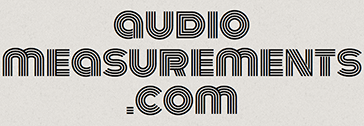In order to understand what a transfer function measurement is displaying, you need to understand what the impulse response / phase response / frequency response means.
Abbreviated, IR / PR / FR:
WIKI article – Impulse Response
WIKI article – Phase Response
WIKI article – Frequency Response
In my ignorance, I basically ignored the IR and went straight for the FR (incorrectly thinking of a FFT measurement as a RTA of sorts). Knowing better now, the IR is the very first and most important trace. The IR trace reveals acoustics and secondary reflections that may be caused by poorly aimed speakers, poorly placed measurement mics, etc…
The IR can also provide information about polarity. If the impulse trace shows a peak that goes negative instead of positive, you may have to resolve that issue before doing anything else.
It’s essential to be able to read and understand what an IR trace reveals.
Once you have an acceptable IR (which also provides a time offset between source and response / reference and measurement), then you can move on to the PR and FR traces with confidence that you aren’t wasting your time.

